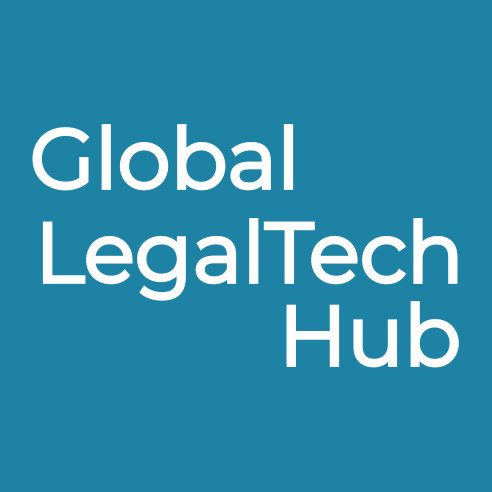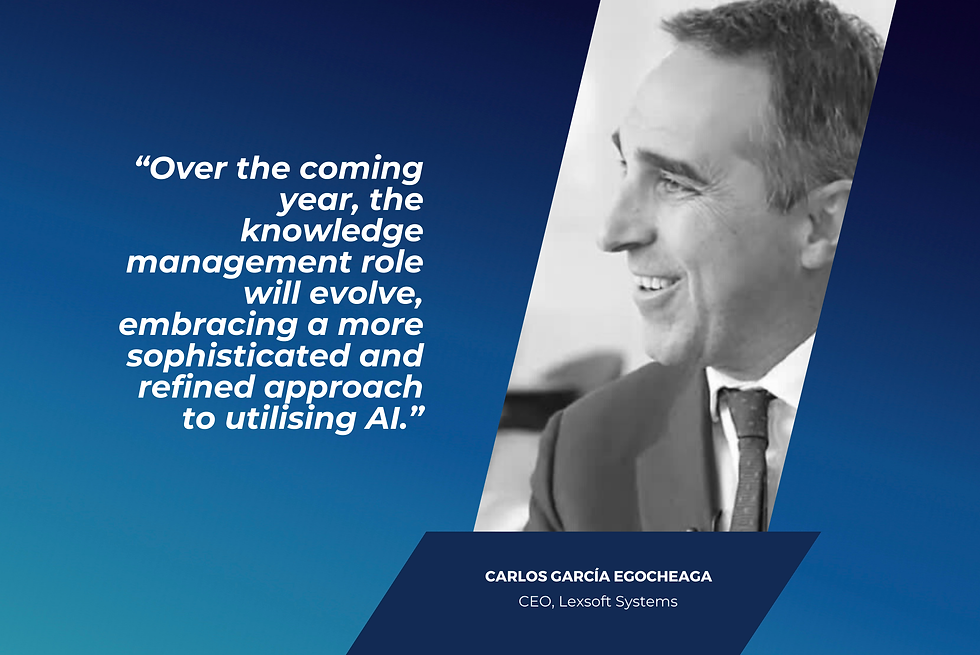5 Tips to Ensure Knowledge Management Project Success in Law Firms
- Global Legal Tech Hub

- Jan 27, 2021
- 4 min read
Updated: Feb 18, 2021
By Carlos García-Egocheaga, CEO, Lexsoft

Given the current economic uncertainties and increased competition, coupled with a dispersed workforce, the need for knowledge management (KM) in law firms is amplified and so, it is no surprise that the function is making a resurgence. Long considered a luxury that only large law could afford, today thanks to technology, KM is supremely affordable. More importantly, the traditional remit of KM – i.e. document retrieval and reuse – has matured to embody the capture of ‘collective experience’ of the firm for competitive advantage.
So how can firms embarking on the adoption of KM as a business-critical function, ensure programme success? Here are five tips:
Clear KM strategy
At a fundamental level, the goal of any KM project is often the same, regardless of the type firm looking to adopt this capability – i.e. to provide lawyers with valuable information that they can reuse rather than reinventing the wheel. This can take the form of the best examples of previous documents for specific types of matters, the efficient processes followed and most importantly the innate expertise and experience that resides in the firm, as they help clients solve their problems.
However, the strategy to achieve this end goal differs firm to firm as organisations function differently, both operationally and culturally. The KM strategy therefore must be attuned to the ways in which the lawyers as well as the larger organisation works, so that the process of modelling is appropriate and efficient.
A key component of the KM strategy must be to determine how to secure document contributions from the lawyers. Typically, lawyers are aware of the documents that reside in the firm’s document management or other enterprise-wide content management system, but the professionals in the KM department driving the project do not have visibility of that data. So commonly there is a situation where the lawyers are reluctant to share that information, while the professionals in the KM department do not have a mechanism or sometimes the appetite to painstakingly secure those best examples of ‘work’ materials from fee earners for their KM models.
Tactical execution of the KM strategy
There must be a good understanding of the scope of work that the KM department needs to undertake, including who will execute the activities and how they will be conducted. For instance, who in the department will say, be responsible for redacting the documents? What kind of classification strategy will be adopted to ensure efficient searchability? Will these tasks be undertaken manually, will AI or any other technology be used to assist? If the latter, does investment need to be made to acquire the technology?
Well-defined taxonomy
Most KM departments are influenced or inspired by the external legal content services providers in the taxonomies that they create for their organisations. It is logical, after all these content providers have spent many years assimilating and honing their taxonomies and content classifications. However, the final taxonomy for classification must be tailored to the specific requirements of individual firms, accurately representing the type of documents that are created in the organisation. It impacts searchability and findability of documents and can be the cause of difference between success and failure of a KM project.
Realistic project resourcing
A resourcing plan is essential. KM departments must have the right mix of team size, expertise, experience and indeed technology. Think about what other expertise you need to bring into the department to assess the quality of the data, given that the variety of document types that need reviewing will be varied. For example, if you are a large firm, your KM departments may be well resourced with specialist lawyers who would be knowledgeable about the nature and quality of documents that need to be included in the knowledge database. On the other hand, if you are a smaller firm, you may need to involve a senior lawyer to make sure that the correct/final documents are being included in the data models. For some types of documents, perhaps a junior lawyer or even a support executive in the team might suffice.
Also, is there a requirement for other technologies to be part of the modelling process?
Clear migration path for documents
Most law firms have a knowledge repository of some sort. The problem usually is that despite best efforts to accurately and appropriately classify, overtime the repository turns into an unmanageable beast.
When developing a KM solution, finding the correct documents to include in the knowledge database and models becomes problematic, even though in all probability, they are stored within the original repository. It is potentially akin to looking for a needle in a haystack. Thereafter, a fair amount of effort to clean, redact and anonymise the documents, enter them into the right taxonomy and so on, is needed.
Consultants, as experts in this process, can play an instrumental role in helping you to identify, clean, and appropriately classify the data. They bring with them insight – from having undertaken this exercise across numerous scenarios – as well as best practice. This approach is also a more cost and time effective option.
Over the years, many firms have embarked on KM programmes and experienced varying degrees of success. A well-considered and well-resourced approach supported by suitable technology can ensure that firms get KM ‘first time right’. This in turn will them on a KM journey that intuitively evolves and scales over-time.
About the author
With over 25 years of experience in the technology sector, as Managing Director of Lexsoft, Carlos García-Egocheaga is responsible for driving the strategic direction and expansion of the overall business globally. He oversees all aspects of Lexsoft including the P&L, HR, legal and business development.




Comments